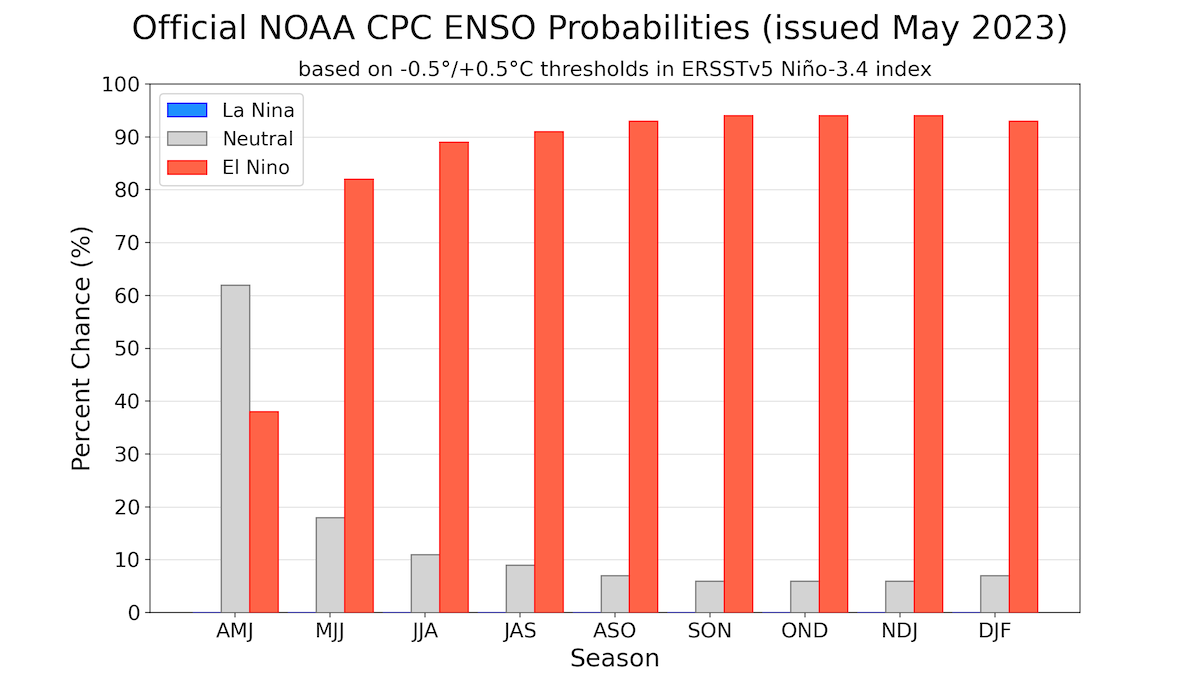As a reminder, tomorrow we get the May WASDE at 11am CT - USDA’s first stab at 2023/24 balance sheets.
A printable version of these pre-report estimates can be found HERE. A post-report recap will be out tomorrow afternoon.
It has been a few months since we last did Ask the Experts in lieu of the normal Thursday No Bull.
With new crop planting underway and the growing season ahead, there is no better time than now to enlist the expertise of this ag weather pro - Eric Snodgrass, Nutrien’s Principal Atmospheric Scientist.
Eric, we are all relatively familiar with the impacts of La Niña after her rare triple dip the past few years. Now that it looks like we are transitioning to El Niño, historically what has that meant for US weather?
The first thing to remember is the impact of any El Niño and La Niña is always strongest in winter. The correlations during the summer are weaker, but not insignificant though.
The maps below show the historical correlation between June to August precipitation and temperature patterns.
Most El Niño favor fewer long-duration episodes of heat in the Cornbelt and better chances of more thunderstorm development, hence the association with larger yields.
What is the current status and what does it mean for US growing season weather in the coming months?
The CPC just updated their ENSO Probability figure today. The probability of having an El Niño is at 89% for June to August, and even higher through the remainder of 2023.
In this setup, trade winds in the tropics will be much slower and at times even blow out of the west while ocean temperatures will warm considerably along the equator in the Pacific.
Additionally, the mid-latitude jet stream (the one that influences North American Weather) will likely carry more momentum than normal and split across the Western US and come back together in the Cornbelt.
Is there any year that we can compare the current setup with?
Keep reading with a 7-day free trial
Subscribe to No Bull to keep reading this post and get 7 days of free access to the full post archives.










